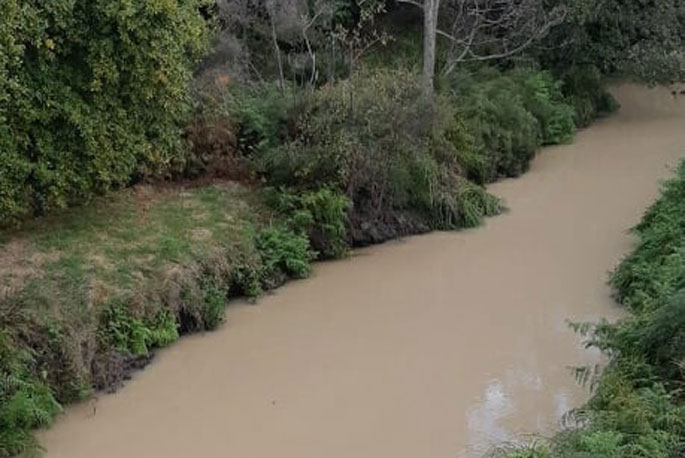A burst wastewater pipe in Rotorua's Whakarewarewa forest has likely caused erosion which has discoloured Puarenga Stream, the regional council says.
The district council says it is treated wastewater and there is no chance raw sewage reached the stream.
Toi Moana Bay of Plenty Regional Council compliance manager Alex Miller said the council got a call from a member of the public on Tuesday about "discoloured water" in streams near Waipa Mill. March 29
"Council staff promptly visited the site to take samples and, with support from the local businesses, investigated upstream to find the source of the issue.
"During this time, Rotorua Lakes Council informed us that they had identified a breakage in a treated wastewater irrigation pipe in the Whakarewarewa Forest land treatment system; the burst pipe caused erosion at the source, which is likely to be the main cause of the discolouration in the stream. "
He said the district council told the regional council it had "shut off irrigation to that area of the forest" to ensure no further discharges would happen.
He said the regional council was investigating and would do follow-up inspections and monitor the discharge point over the coming days.
Miller said as the matter was still under investigation, the regional council was unable to comment on actual or potential environmental effects until it received sample results.
Rotorua Lakes Council infrastructure networks performance manager Eric Cawte said nearby timber mill Red Stag told the council about the discolouration of the Waipa Stream and began investigating.
'At that stage, Bay of Plenty Regional Council staff were in the mill area investigating other possible causes of the issue, having been notified by other parties.”
Trility notified the regional council and other stakeholders as soon as the pipe break was found, he said.
Cawte said the cause of the break was not known but would be investigated.
He confirmed the council had turned off irrigation on the affected spray block as soon as the break was found.
'There is no risk that wastewater (ie raw sewage) reached the stream. What is pumped from the wastewater treatment plant to the forest for spraying in the forest is fully treated wastewater and our wastewater is treated to a high standard. The treated wastewater is clear in colour.”
He said based on initial investigations the wastewater from the pipe break made its way overland to the stream, carrying silt with it that discoloured the stream.
Cawte said the silt posed 'very low risk” to human health and bacterial testing of Puarenga Stream at Whakarewarewa Village shortly after the break showed E.coli levels 'to be within recommended bathing water guidelines”.
'Monitoring of the turbidity (which is a measure of discolouration) showed it dropped quickly within a matter of hours after the flow to the spray block was stopped.
'Turbidity has continued to improve since then and it may take a few more days for the sediment in the stream to settle fully and the stream to be back to normal.”
The council and Trility had 'comprehensive asset management systems” for critical assets, including condition monitoring and maintenance programmes 'designed to minimise any failures and mitigate any risks to the environment and public health”.
'These types of occurrences are rare but occasional and unforeseen failures are to be expected in any network.
'There is a strong focus on effective response and we follow protocols.”
Cawte said the council was co-operating with the regional council's investigation while undertaking its own.
"[The council] will undertake repairs and any additional mitigation works deemed necessary.
'In the meantime, that spray block – which is one of 16 in the forest – will remain out of commission. This will not affect the forest irrigation programme as use of the blocks is rotated. They are never all in use at once.”
Local Democracy Reporting asked why the council had not notified the public about the incident.
Cawte said the focus when responding to such incidents was on minimising adverse effects on the environment and public health and following response protocols.
'The level of notification is dependent on the situation and the level of risk to the environment and public health and/or safety.
'In this case signage was erected in a number of places cautioning against entering the water, as a precaution, and stakeholders including forest stakeholders and Whakarewarewa Village representatives were notified and will be kept informed.”
-Local Democracy Reporting is Public Interest Journalism funded through NZ On Air




1 comment
Clear as mud
Posted on 01-04-2022 06:48 | By msmafia
What chemicals are used to treat wastewater exactly? And what type of forest needs irrigating? Pine trees? I dont think so. This is not acceptable on any level. Is this part of the 3 waters plan? How can you blame a rusty pipe on contaminating the river? if your pumping it directly on the land Does Nanaia Mahuta know what your up to?
Leave a Comment
You must be logged in to make a comment.